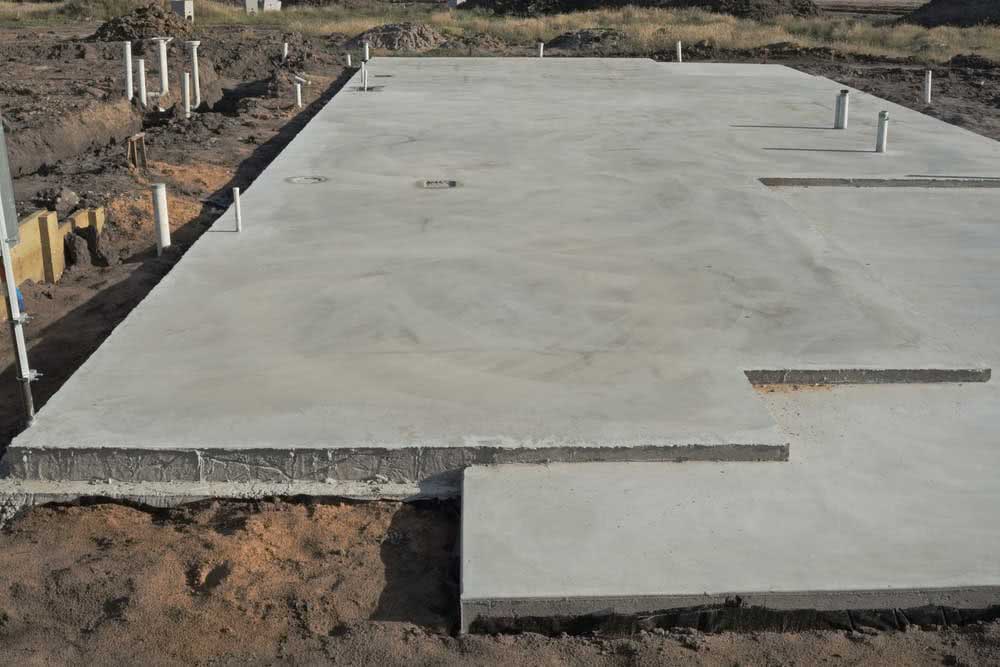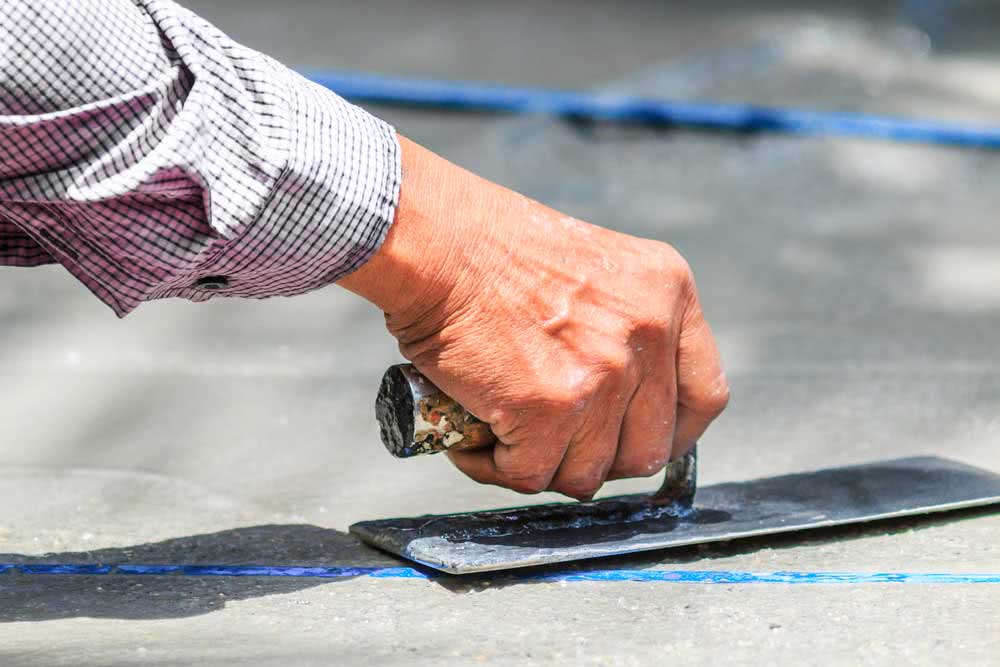An infiltration at home can be a big problem and cause great damage, both to furniture and the structure of the place, causing the appearance of cracks and the proliferation of mold.
Therefore, it is extremely important to apply a waterproofing agent to the slab, as it ensures that moisture will not affect the house negatively with infiltrations and exposure to corrosion and reinforcement. This also prevents winds and other bad weather from damaging the slab seal.
Thinking about it, we separated some information and tips on waterproofing for slab and we will present them in this article. Keep reading!
Hire someone to apply the waterproofing to exposed slab
The most important thing before purchasing a slab waterproofing agent is to hire a specialized company. This is because carrying out this process needs people with experience. In addition, the service provided will have more guarantee.
It is not by chance that this recommendation is made, as a poorly executed waterproofing service can have serious consequences for your home. So if you choose a company or make a decision to do the job yourself, do a lot of research on the subject.
However, if you are sure that you will get the job done, you need to know that, in order to apply the waterproofing agent for exposed liquid slab, it is important to obtain a paint roller with an extender or other type of tool. This instrument will dry around two hours after the third hand applied to the site.
How is the slab waterproofing application process?
The process, if carried out by a company, begins with the elaboration of the project. This step is mandatory before the execution of any service, according to NBR 9575.
This is done from the construction planning that you hand over to the service provider, so she will know which is the best waterproofing agent for slab and other regions of the house. In this way, the applied product will be fully compatible with the surface and will not cause any problems.
Then, depending on the waterproofing for the slab that will be used, the solution will be implemented. Commonly, the application strategy is the same for all products: direct on the surface. However, this is at the discretion of the company providing the service and the material specifications.
Generally, the waterproofing agent is applied in layers on solid surfaces and, for this, instruments such as roller, mentioned above, brushes or even special brooms are used. When one layer is dry, another layer will be applied until the seal is complete.
After that, the process can take two different paths: hot or cold.
When using waterproof asphalt blankets, it is common to follow the hot procedure, as they need high temperatures to adhere to surfaces properly. This can make the installation a little more complex and time-consuming.
When using polymeric or acrylic mortar membranes, it is common to follow the cold application procedure, as they have substances that naturally adhere at room temperature.
Where is the slab waterproofing applied?
The application can be made either on site or prefabricated. Blankets are usually prefabricated in standard size rolls and installed according to the measurements, which the applicator establishes when studying the location.
If the application uses impression materials on the spot, the processes explained above will be carried out.
As for the application structure of the waterproofing agent for the slab, the process can be done directly on the slab, if it is regularized. Some people prefer to apply protection both on the slab and on the roof, with the intention of reinforcing the waterproofing. This action is generally recommended in places where the climate is hostile, with frequent winds and storms.
In addition, it is necessary to pay attention to the needs of the waterproofing itself, since, for example, the asphalt blanket has no resistance to ultraviolet rays, so it cannot withstand constant exposure to the sun. In such cases, it is necessary to apply mortar to protect the structure.
What are the types of waterproofing for slab?

When buying waterproofing for slab, you will notice that there are some variations. However, there is no need to worry, in addition to the product description on the packaging being very informative, we will explain more about some of them below.
Acrylic membrane
This waterproofing agent for slabs is manufactured from the emulsification of various thermoplastic polymers. In this way, it gains a high adhesive power, flexibility and mechanical resistance. Its application must be done with several cold coats.
However, its use is not recommended for slabs in which it is possible to accumulate water layers, since there may be an interaction between water and the acrylic membrane.
This type of waterproofing material for slabs arises through the mixture of acrylic polymers with cement. It has a high resistance to exposure to the sun and must be applied cold.
Asphalt blanket
The last type of waterproofing for slab uses asphalt as a base and, according to the labels, usually includes other materials such as polyethylene and fiberglass. It is flexible, but has a low resistance, both mechanical and for ultraviolet rays. Thus, it can suffer from degradation.
The installation of this waterproofing agent is usually done with heat, as this guarantees its complete adhesion.
A curious fact: in the past this was the most popular application among waterproofing agents, but it ended up losing its place to types applied cold.
What are the types of slab waterproofing?

There are also different ways to apply a waterproofing agent to a slab. See some of them below:
- Rigid: made with additives, over traditional civil construction mortar, such as plaster or cement.
- Flexible: it is usually applied on the slab surfaces. The materials used show elasticity and adapt to the expansion of the structure, caused by thermal variation.
- Semi-flexible: with greater flexibility, compared to rigid, it should not be used on surfaces subject to expansion.
How to apply waterproofing to exposed liquid slab
Now that you are well informed about the waterproofing agent for slab, you should be aware that its application is very simple. However, it requires that certain precautions be taken, in order to ensure the safety of the employees of the contracted company, or yours, if you have chosen to perform the service.
Observe if the service providers are properly equipped with PPE (Personal Protective Equipment), which are safety glasses, boots, rubber gloves, helmet and protective mask. They are the ones who will prevent several accidents on the job.
In addition to this factor, it is also important that the exposed slab undergoes a previous cleaning, which can be done with a broom or vacuum. Thus, it is more guaranteed that the waterproofing film does not have imperfections when installed.
In the following, for those who will apply the waterproofing to the slab on their own, we will explain the step by step of the process.
See the application step by step:
- First of all, after cleaning, you should check the slab for holes, cracks or other problems. If your answer is positive, make corrections before applying the product.
- Then, apply the first hand of the waterproofing agent for slab
- Then wipe the hair with a broom and let the product dry.
- Repeat the procedure two more times. If possible, apply coatings crosswise at six hour intervals.
- Finally, to make sure that the waterproofing is perfect, perform a test: seal the drains and fill the environment with water. In this way, it is possible to observe if there is any infiltration.
Did you like this article?
When the slab does not have waterproofing, it is common for cracks and cracks to appear on its surface, which reduces its durability and causes infiltrations.
Therefore, applying a waterproofing agent to the slab is essential. This will reassure you a lot, especially if your home is in a location that is frequently hit by rain.
Did you like the article? Do you have any suggestions or criticisms? Write in the comments!



